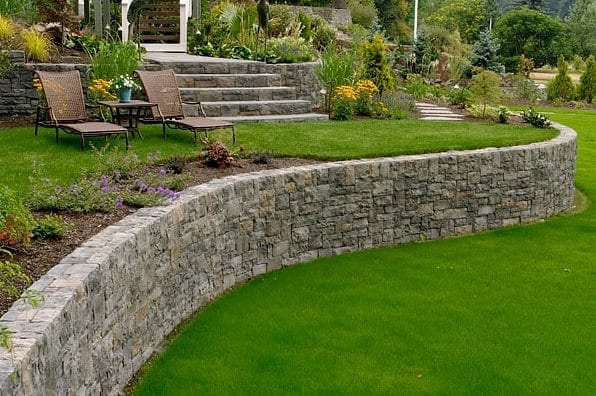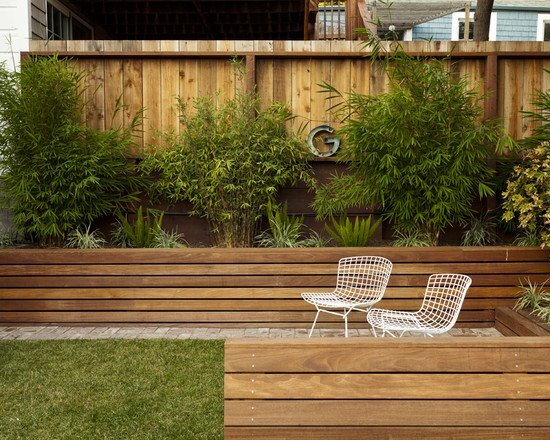Enhancing Residential Or Commercial Property Stability: The Role of Retaining Walls in Soil Retention and Erosion Control
Keeping walls stand as silent guardians, playing a critical duty in soil retention and erosion control. By checking out the nuances of various types, design considerations, building strategies, and upkeep pointers associated with retaining wall surfaces, a much deeper understanding of their pivotal duty in boosting building stability emerges.
Importance of Retaining Walls in Security
The importance of maintaining wall surfaces in ensuring security within landscapes can not be overstated. Retaining wall surfaces play a crucial role in keeping back soil, stopping disintegration, and creating level surface areas in sloped locations. By giving architectural assistance, preserving walls aid to redistribute lateral stress brought on by soil, protecting against landslides and slippage. Along with boosting the aesthetic appeal of a home, retaining walls add to the general security and capability of outdoor areas.
Retaining wall surfaces are especially necessary in irregular or uneven terrains where dirt disintegration is a typical event. Without sufficient support, dirt disintegration can cause the deterioration of landscapes, compromising the honesty of frameworks and posturing threats to residents. Retaining walls act as barriers, maintaining the soil and preventing it from moving downhill during heavy rains or various other environmental stress factors.
Moreover, keeping wall surfaces offer long-lasting advantages by minimizing upkeep costs connected with soil erosion and land instability. By buying properly designed retaining wall surfaces, residential or commercial property proprietors can ensure the durability and sustainability of their landscapes while promoting a safe and aesthetically appealing atmosphere.

Sorts Of Retaining Walls for Disintegration Control
Gravity keeping wall surfaces are strong structures that depend on their weight to resist the stress of the soil behind them. Cantilever keeping walls, on the various other hand, are made with a thicker base and use a bar arm to hold up against the dirt pressure.
For taller walls or where area is a constraint, anchored keeping walls are typically utilized. These wall surfaces utilize wires or strips that are secured right into the dirt or rock behind the wall surface to supply extra support. One more type, the sheet stack preserving wall surface, is excellent for locations with soft dirt. Retaining Walls Sunshine Coast. These walls include interlacing sheets that are driven into the ground to produce a barrier versus soil disintegration. When selecting the proper sort of preserving wall for erosion control, variables such as soil structure, wall surface height, and website conditions need to be carefully taken into consideration to ensure lasting security and performance.
Layout Factors To Consider for Soil Retention
The elevation and location of the retaining wall surface are vital aspects that affect the overall design. Engineers have to likewise think about the pressure put in by the kept soil and prospective side lots to guarantee the framework's security over time.
Additionally, the product option for the preserving wall surface is crucial in boosting longevity and capability. Concrete, wood, gabion baskets, and all-natural rock are common materials made use of in maintaining wall surface construction, each with its one-of-a-kind benefits and factors to consider. Appropriate drain devices, such as weep holes and French drains, ought to be incorporated right into the layout to protect against water accumulation behind the wall, which can bring about structural failure and disintegration.
Building Strategies for Maintaining Walls
When carrying out layout factors to consider for effective soil retention, the building methods for preserving walls play an important role in making certain structural honesty and long-term security. The success of a preserving wall mostly relies on the building and construction methods used. One common technique is the gravity wall, which counts on the weight and mass of the wall surface itself to stand up to the pressure of the retained soil. Gravity wall surfaces appropriate for low to medium elevations and are reasonably very easy to construct. Retaining Walls Sunshine Coast.
Another widely made use of building method is the cantilevered wall, which uses a concrete piece structure that expands in reverse into the retained dirt. This style gives additional stability and is suitable for tool to high keeping walls. For taller frameworks, enhanced dirt strategies such as the usage of geogrids or dirt nails can be utilized to boost the wall's strength and security.

Maintenance Tips for Home Security
To make sure long-lasting residential or commercial property stability, normal maintenance techniques are vital for maintaining the integrity of avoiding and preserving walls erosion problems. Inspecting keeping wall surfaces periodically is critical to recognize any kind of signs of damage, such as fractures, bulging, or leaning. Any type of problems should be dealt with immediately to avoid additional wear and tear. Cleansing the surface area of the retaining wall surfaces can also aid keep their architectural honesty by eliminating dirt, particles, and greenery that could compromise the wall surface with time (Retaining Walls Sunshine Coast).
In addition to visual examinations and cleaning, it is very important to inspect the drainage systems connected with you could look here the retaining wall surfaces. Making certain that drains pipes are free from obstructions and working properly can protect against water build-up behind the wall surfaces, which can cause stress and potential failing. Correctly working water drainage systems are important for handling water circulation and reducing the threat of erosion.
On a regular basis monitoring and keeping keeping wall surfaces according to these tips can expand their life expectancy and contribute to the general stability of the residential property.
Verdict
To conclude, retaining walls play a vital function in enhancing residential property stability by preventing dirt disintegration and keeping soil in position. By using different kinds of thinking about and keeping wall surfaces style and building techniques, homeowner can efficiently control disintegration and keep the stability of their land. Regular maintenance of keeping walls is essential to ensure long-term stability and defense against erosion. Appropriately constructed and kept keeping wall surfaces are crucial elements in protecting building stability.
For taller walls or where space is a constraint, secured keeping walls are frequently used. These wall surfaces utilize cables or strips that are secured right into the soil or rock site web behind the wall surface to offer added support. When choosing the suitable kind of retaining wall surface for erosion control, variables such as dirt composition, wall surface height, and website conditions must be carefully considered to make certain long-lasting stability and performance.
One usual strategy is the gravity wall, which relies on the weight and mass of the wall surface itself to withstand the pressure of the retained soil. Cleaning the surface of the preserving wall surfaces can likewise aid preserve their structural stability by removing dust, debris, and greenery that might deteriorate the wall over time.